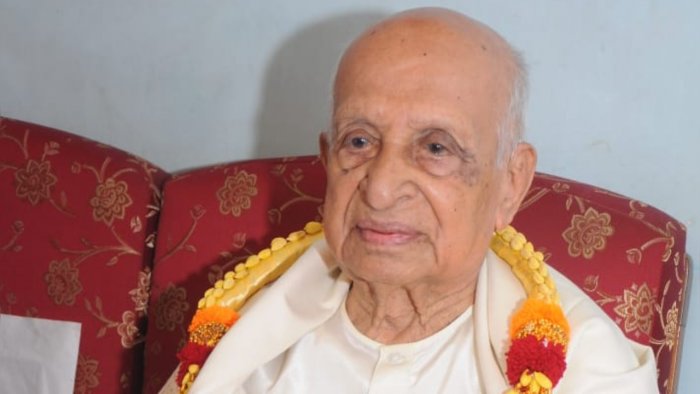
Bengaluru, Apr 19: Centenarian, Kannada writer, grammarian, editor, lexicographer and critic Ganjam Venkatasubbiah passed away during the early hours of Monday due to old age complications. He was 107.
He breathed his last at 1:15 am. Dignitaries from various fields have condoled his death.
He is primarily known for his contribution to the world of Kannada lexicography and is renowned as a walking encyclopaedia of the Kannada language and culture.
He compiled 12 dictionaries, authored four seminal works on dictionary science in Kannada, edited over sixty books and published several papers.
He also translated into Kannada eight important works from other languages.
Recipient of the Kannada Sahitya Akademi Award and the Pampa Award, Venkatasubbiah was born on August 23, 1913.
His ancestors hailed from Mudagandur village in the Mandya district. Some of his ancestors were linguistic scholars. His grandfather Narasimha Jois was a Sanskrit scholar, while his father Ganjam Thimmannaiah was a scholar of both Kannada and Sanskrit.
He secured his postgraduate degree in Kannada from Maharaja’s College, Mysore in 1937.
He started his career as a teacher at a municipal school in Mandya. He taught at the high school in Davanagere and at Maharaja’s College and at Vijaya College in Bengaluru.
After his retirement in 1973, he began the work to publish a Kannada-to-Kannada dictionary as its chief editor.
He was vice president of the Lexicographical Association of India for 17 years. He served as an adviser to the multilingual dictionary project of the Institute of Asian Studies, Chennai. He was also a consultative committee member in the Telugu lexicon project initiated by the Telugu Academy of the Government of Andhra Pradesh.
His Klishta Pada, a dictionary of complex words, was released when Karnataka celebrated 50 years of State formation.
He presided over the 77th Akhila Bharata Kannada Sahitya Sammelana held in Bengaluru in 2001.








Comments
Add new comment